Are you considering getting a tattoo sleeve? Planning a tattoo sleeve can be a daunting task. But with the right game plan and some creative ideas, you can create a stunning piece of artwork that truly reflects who you are. In this article, we will provide a step-by-step guide on how to plan a tattoo sleeve. From choosing the right design to selecting the right artist, we will cover all the important details you need to know to create the perfect tattoo sleeve.
Contents
Things to Consider Before Planning a Tattoo Sleeve
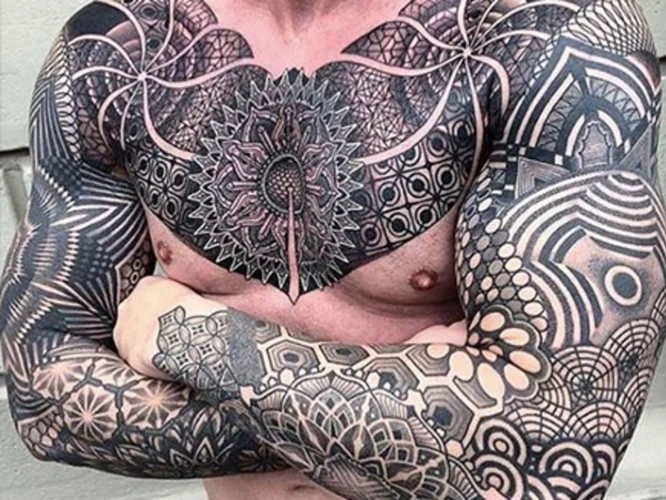
Decide on Your Design
Before planning your tattoo sleeve, it’s important to decide on the design you want. Consider the style, size, and placement of the tattoo. Think about how the elements of the tattoo will fit together to create a cohesive design. Research tattoo designs and consult with your artist to ensure you get the look you want.
Budget
Tattoos can be expensive, so it’s important to know your budget before beginning the planning process. Figure out what you can afford and be sure to factor in the cost of touch-ups and aftercare.
Choose an Artist
Choose an artist with experience in creating tattoo sleeves. Look at the artist’s portfolio and make sure you like their style. It’s also important to find an artist you trust and feel comfortable with.
Pain Tolerance
Getting a tattoo sleeve can be a long and painful process. Before getting inked, consider your pain tolerance. Talk to your artist about the different options for managing pain, such as using a topical anesthetic.
Research and Research Some More
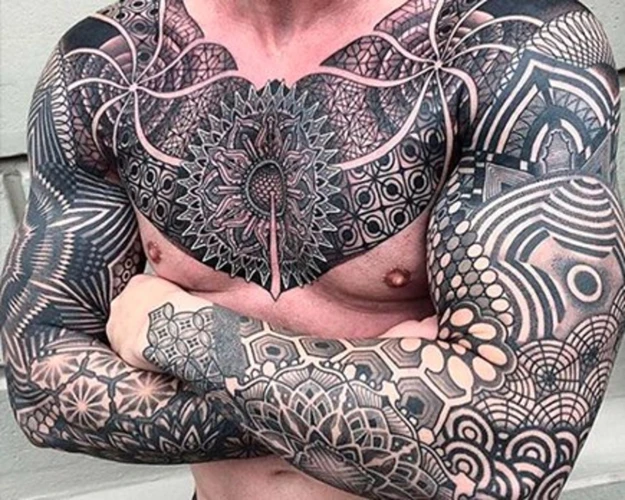
Once you have settled on your theme and determined the size and location of the tattoo, it’s time to start researching the individual elements of your tattoo sleeve. You may want to look into the history of the symbols or characters you plan to include in your sleeve, learning their stories and meanings. You’ll also want to look up references of the type of style, design, layout, and color scheme you plan on using.
Tip: Don’t be afraid to sketch out your ideas in a notebook or on paper. This can help you visualize the design of your sleeve, and it’s also a great way to communicate with your artist.
Tip: Do your research online, in books, magazines, or any other source of information. Compare the references you find, and take notes on what elements you want to include in your design.
Tip: Check out other tattoos for inspiration. You can also look at the portfolio of the artist you plan to go to for your sleeve. Consider how the artist interprets the concepts you want to use, and make sure their style fits your vision.
Tip: Don’t be afraid to look outside of the box. Although you can find great references online, you may find inspiration in the most unexpected places. So be creative and adventurous in your research process.
Outline the Design
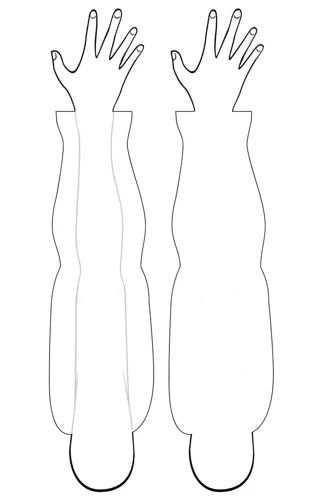
- Choose a Theme: Brainstorm ideas for your tattoo sleeve and consider how they all fit together. Think about the elements you want to include, how the elements will interact, and what your overall message should be.
- Gather Visual References: Collect images and ideas from online and offline sources. Use these as reference material to create a design that speaks to you and tells your story.
- Create a Sketch: Take a piece of paper and a pen and sketch out the design. Start with the main element and work your way outward. Incorporate minor elements and create a layout that will fit your arm.
- Refine the Sketch: Once you have a basic sketch, you can begin to refine it. Adjust the layout and make sure that the elements flow together. Consider the size, placement, and orientation of the elements.
- Finalize the Design: Once you are happy with the sketch, you can begin to finalize the design. Add color, detail, and texture to the elements. Make sure that the design is balanced and that all the elements work together.
Color and Placement
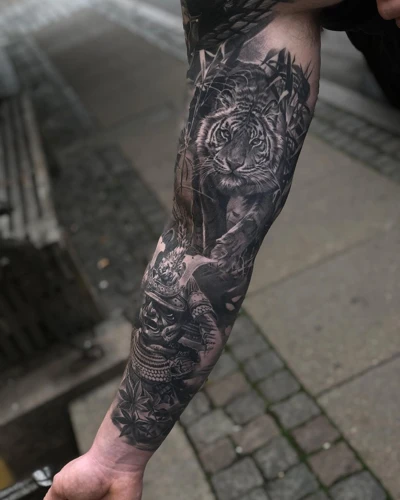
- Choose a Color Palette: Selecting a cohesive color palette is key when planning a tattoo sleeve. Colors that look good separately may clash when placed side by side. Try to pick colors that will look harmonious together.
- Think About Placement: Before you decide on a particular tattoo design, think about where each tattoo will be placed. For example, if you are planning a large tattoo sleeve on your arm, you might want to have a smaller tattoo on your shoulder or wrist to balance the composition.
- Be Mindful of Pain: Some areas of the body are more sensitive to pain than others, so it’s important to take this into account when planning a tattoo sleeve. Areas such as the ribs, inside of the elbow, feet, and hands can be particularly painful.
Stick to Your Plan
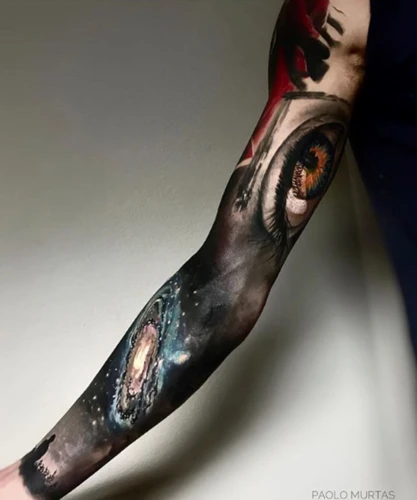
- Set a Deadline: Set a timeline for when you want your sleeve to be complete. This will help you keep on track and make sure you don’t veer off course.
- Stay Organized: Keep all sketches, photos, and other reference material organized. This will help you stay focused and make sure your sleeve is cohesive.
- Be Patient: Tattoos take time, and a sleeve is no exception. Don’t rush the process; instead, take your time and plan each piece carefully.
- Be Flexible: Your plan may change over time, and that’s ok. Don’t be afraid to make changes if something isn’t working out the way you had planned.
Consider Touching Up Your Sleeve

| Step | Details |
|---|---|
| 1 | Check the overall design of your sleeve. Identify any areas where the ink may have faded or bled. |
| 2 | Evaluate the quality of the tattoo. Make sure it still looks exactly as you imagined it. |
| 3 | Decide if you want to touch up any parts of the sleeve. Touching up certain areas may help restore the vibrancy of the tattoo. |
| 4 | Speak to your tattoo artist about the touch-up. Ensure that the artist is familiar with the design of your sleeve. |
| 5 | Schedule an appointment for the touch-up. Give the artist enough time to plan and prepare for the session. |
When planning a tattoo sleeve, it is important to consider touching up the design. This will ensure the quality of the tattoo and help to restore its vibrancy.
Start by checking the overall design of your sleeve. Identify any areas where the ink may have faded or bled. Evaluate the quality of the tattoo and make sure it still looks exactly as you imagined it.
If you want to touch up any parts of the sleeve, speak to your tattoo artist about the touch-up. Ensure that the artist is familiar with the design of your sleeve. When you are both satisfied with the design, schedule an appointment for the touch-up. Give the artist enough time to plan and prepare for the session.
Aftercare
- Wash your tattoo: Wash your tattoo with lukewarm water and a mild, fragrance-free soap. Gently pat it dry with a clean towel.
- Apply a thin layer of ointment: Apply a thin layer of ointment to the tattoo and let it soak in for a few minutes.
- Apply lotion: Apply a thin layer of lotion to the tattoo. This will help keep your skin hydrated and free of irritation.
- Keep the area clean: Keep the area clean by washing it daily with warm water and cleaning it with a mild, fragrance-free soap. Avoid scrubbing the area.
- Avoid sun exposure: Avoid exposing the tattoo to direct sunlight for the first few weeks after getting it. Wear protective clothing to cover the area when outside.
- Avoid swimming: Avoid swimming or soaking in a hot tub for at least two weeks after getting your tattoo. This could cause infection.
- Be gentle: Be gentle with your tattoo and avoid picking, scratching, or rubbing the area. This could cause damage to the tattoo.
- See a doctor: See a doctor if you experience any signs of infection such as swelling, redness, or pain. This could be a sign of an infection and should be treated by a doctor.
Frequently Asked Questions
What are the Different Types of Tattoo Sleeve Designs?
Tattoo sleeve designs can range from simple, single-colored designs, to intricate, multi-colored pieces. Common designs include traditional Japanese art, tribal-style tattoos, bold blackwork, and more. Whatever design you choose, it should reflect your personal style and interests. Consider the size, placement, and color scheme of your sleeve before deciding on a design.
How long does it typically take to plan a tattoo sleeve?
- Design Process: Depending on the complexity of the design, it can take several days to several weeks to create the perfect tattoo sleeve design.
- Consultation: Scheduling and attending a consultation with the tattoo artist is essential and should be scheduled as soon as possible. This typically takes between 30 minutes and two hours.
- Pre-tattoo Preparation: There are several steps that need to be taken prior to the tattoo session, including selecting the right tattoo artist, researching aftercare practices, and preparing for any potential risks. This process typically takes a few days.
- Tattoo Sessions: The length of the tattooing session(s) can vary greatly depending on the complexity of the design, size, and the experience of the artist. Most tattoo sleeves take multiple sessions to complete, with each session typically lasting between two and five hours.
- Healing Process: After the tattoo is completed, the healing process must be carefully managed. This process can take several weeks, and should not be rushed.
In total, it typically takes several weeks to several months to plan and complete a tattoo sleeve.
Can I get a Tattoo Sleeve if I Have Sensitive Skin?
Tattoo sleeves are a popular choice for many, but if you have sensitive skin, there are a few things to consider before taking the plunge. Some inks can cause an allergic reaction, so it’s important to choose a reputable, experienced artist who uses hypoallergenic inks. Additionally, you may want to get a smaller design, as large designs may cause more irritation. Finally, be prepared to use a cream or ointment during the healing process to soothe any redness or itching.
What are the Costs Associated with Getting a Tattoo Sleeve?
The cost of getting a tattoo sleeve depends on the complexity of the design as well as the time it takes for the artist to complete the art. Generally, tattoo sleeves can range from $500 to $2000. Prices may vary depending on the size, detail, and time spent on the tattoo. It is important to discuss the cost with the artist before getting the tattoo.
Is it Necessary to Consult a Professional Artist before Getting a Tattoo Sleeve?
Yes. It is highly recommended to consult with a professional artist before getting a tattoo sleeve. Professional artists have experience in creating aesthetically pleasing designs that incorporate your ideas and preferences. They can also advise you on the best placement of the tattoos and make sure that the tattoo sleeve looks great on your body.
Conclusion
Planning a tattoo sleeve can be an intimidating task, but it can also be incredibly rewarding. By following these steps, it will be easier to create a meaningful design that expresses your individual style. Take your time, do your research, and find an artist who can help you to bring your ideas to life.
References
- Litvinova, L. (2020). How to Plan a Tattoo Sleeve: A Step-by-Step Guide. Tattoodo.
- Carr, B. (2020). Everything You Need to Know About Getting a Tattoo Sleeve. Allure.